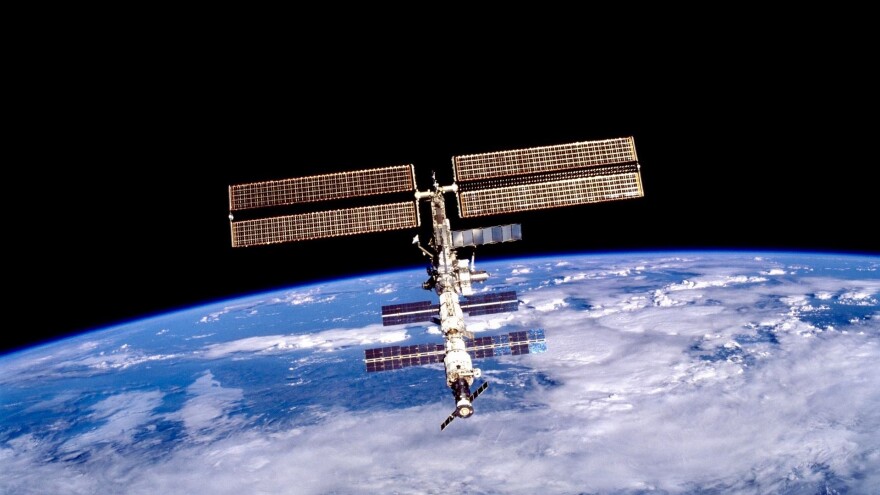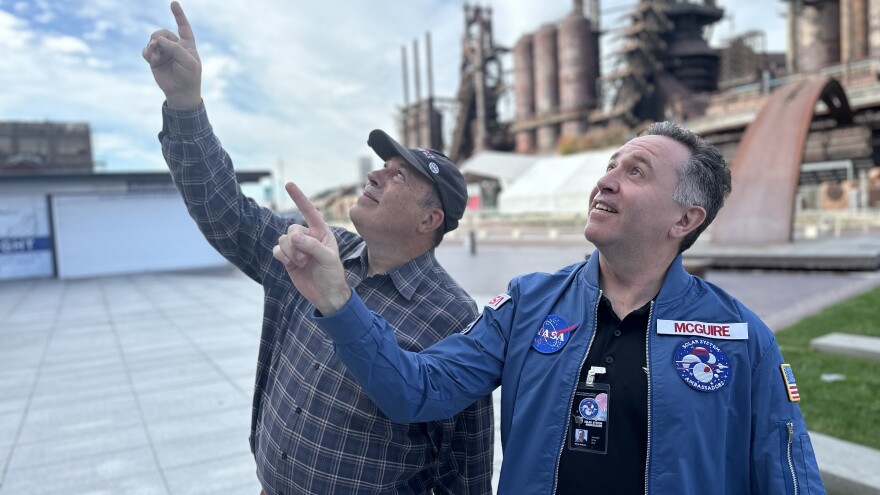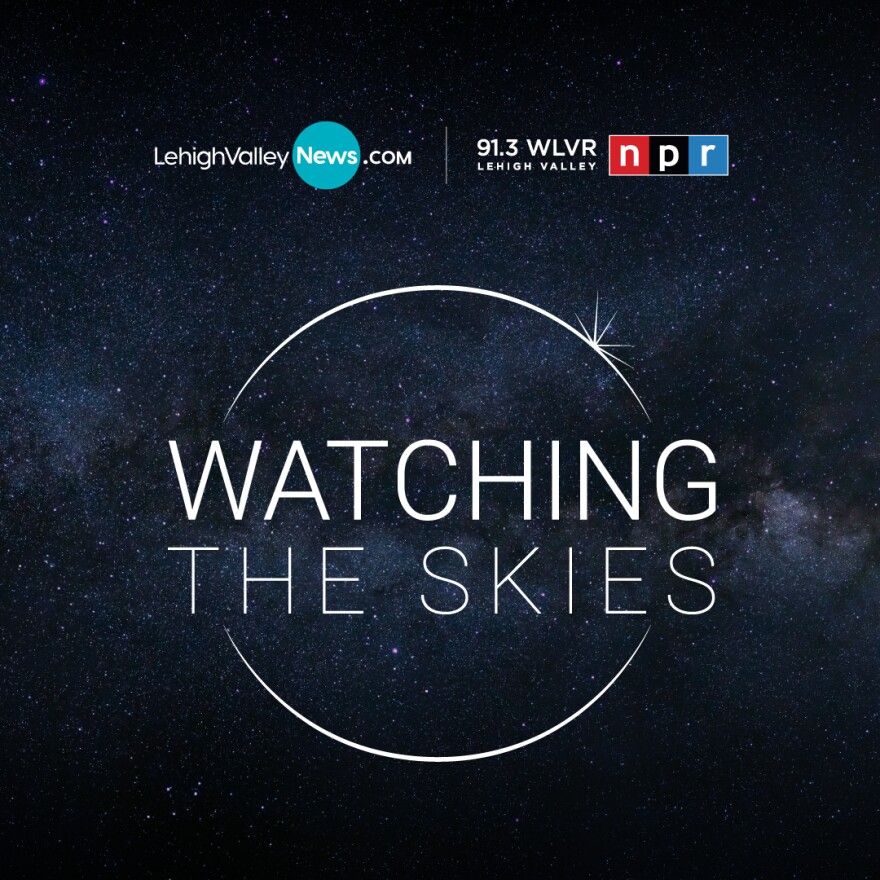BETHLEHEM, Pa. — Brad Klein reviews upcoming astronomical highlights with Bethlehem’s "Backyard Astronomy Guy," Marty McGuire.
This week, an update on the International Space Station.
The night sky has become crowded with human-made satellites, and on a clear night they are among the most conspicuous objects in the night sky.
According to a recent article in Scientific American, there are about 11,000 working satellites in orbit. And there are thousands more that have outlived their working lifespan and remain circling the Earth.

From the ground, a satellite looks like a star that is moving in a straight line across the night sky. The visible light comes from sunlight that is reflected back to the observer on Earth. And the brightest of all satellites is the International Space Station (ISS) with its huge solar panels.
NASA supports a website and app that will inform you when the ISS is overhead, and likely to be visible at any given spot on Earth.
“At this time, there’s actually seven astronauts aboard the International Space Station,” McGuire said.
Three are Americans, one is from Japan, and three are Russian cosmonauts.
So as you gaze upwards, be aware that there may be someone in orbit overhead, gazing down at you.



